AUTHOR: Zondervan
PRODUCT HIGHLIGHTS: Includes more than 100,000 cross-references, translator’s notes, passage headings, parallel passages, word of Jesus in red, poetry and prose text indentation
DESCRIPTION
The NIV is a highly accurate and smooth-reading version of the Bible in modern English. It has the largest library of printed and electronic support material of any modern translation. The translation itself strikes a balance between a word-for-word and thought-for-thought philosophy, for the best representation of the intent of the original languages in today’s language. The translators’ mission was to “produce an accurate translation, suitable for public and private reading, teaching, preaching, memorizing, and liturgical use.” It is the world’s best-selling modern translation, with over 150 million copies in print since its first full publication in 1978.
Since its first emergence as a complete text in 1978, the New International Version (NIV) has stood as the modern pioneer of a different approach—an approach that mirrors the balance of priorities held by the KJV translators four hundred years ago. The NIV tries to bring its readers as close as possible to the experience of the original audience: providing the best possible blend of transparency to the original documents and comprehension of the original meaning in every verse. The NIV is founded on the belief that if hearing God’s Word the way it was written and understanding it the way it was meant were the hallmarks of the original reading experience, then accuracy in translation demands that neither one of these two criteria be prioritized above the other. Built upon this philosophy, the NIV has experienced much the same reaction in the church and beyond as its beloved predecessor whose values it seeks to emulate. Thirty years after its first publication there are more than four hundred million NIV Bibles in print. But, unlike its predecessor, the NIV was designed from the very start with a built-in mechanism to defy the attritional effects of time. Since 1978, the NIV translation team has continued to meet, year after year, reviewing developments in biblical scholarship and changes in English usage—revising the translation to ensure that it continues to offer its readers an experience that mirrors that of the original audience, and periodically releasing those revisions in updated editions of the text.
Updating the NIV for 2011
The chief goal of every revision to the NIV text is to bring the translation into line both with contemporary biblical scholarship and with shifts in English idiom and usage. In 1984, various corrections and revisions to the NIV text were made. A lengthy revision process was completed in 2005, resulting in the separately published Today’s New International Version (TNIV). This updated NIV builds on both the original NIV and the TNIV and represents the latest effort of the Committee on Bible Translation (CBT) to articulate God’s unchanging Word in the way the original authors might have said it if they had been speaking in English to the global English-speaking audience today.
About this electronic version
The version for theWord includes more than 100,000 cross-references and closely follows the printed format, including poetry indentation, paragraphs, passage headings and translator’s footnotes. You may preview some sample from the links below.
NIV Copyright © 1973, 1978, 1984, 2011 by Biblica, IncTM.
Used by permission of Zondervan.
All rights reserved
www.zondervan.com
What is the New International Version?
When the original Bible documents first emerged, they captured exactly what God wanted to say in the language and idiom of ordinary people. There was no friction between hearing God’s Word the way it was written and understanding it the way it was meant. The original audience experienced a unique fusion of these two ingredients.
Readers of the Bible today, however, can no longer experience this fusion. The passage of two thousand years has turned the Greek and Hebrew of Bible times from living languages into historical artifacts. If we had the original documents in our hands today, they would still represent exactly what God wanted to say. But the vast majority of people would no longer be able to understand them.
In 1611, the King James Version (KJV) of the Bible sought to bring English readers back as close to that original fusion as possible. As with all translations, the transition from the original languages to Elizabethan English involved some loss of transparency to the original documents. And yet that small loss in transparency was more than made up for by a tremendous gain in comprehensibility: People could hear God’s Word in their own language! The result propelled the body of Christ into a new era of personal transformation and global reformation.
But, just like the original documents, the KJV was unable to escape the effects of time. The English language changed. The ‟thys” and ‟thous” and ‟whosoevers” of the KJV became less and less the language of everyday people and more and more the language of a bygone age. The KJV’s ability to present God’s Word the way it was written, while at the same time allowing readers to understand it the way it was meant, began to decline.
In the last century, a number of excellent new English Bible translations have emerged to fill this void.
Some translations place a particularly high priority on hearing God’s Word the way it was written — giving the modern English reader the opportunity to see much of the form and structure of the original documents. Ease of understanding varies from verse to verse and from book to book according to the complexity of the source material. But all verses and all books adhere to a high standard of transparency to the original languages.
Other translations place a particularly high priority on understanding God’s Word the way it was meant — helping the modern English reader to grasp the content of the Bible in their own words and their own idioms. Transparency to the form and structure of the original documents varies from verse to verse and from book to book. But all verses and all books adhere to a high standard of comprehensibility.
Since its first emergence as a complete text in 1978, the New International Version (NIV) has stood as the modern pioneer of a different approach — an approach that mirrors the balance of priorities held by the KJV translators four hundred years ago. The NIV tries to bring its readers as close as possible to the experience of the original audience: providing the best possible blend of transparency to the original documents and comprehension of the original meaning in every verse. The NIV is founded on the belief that if hearing God’s Word the way it was written and understanding it the way it was meant were the hallmarks of the original reading experience, then accuracy in translation demands that neither one of these two criteria be prioritized above the other.
Built upon this philosophy, the NIV has experienced much the same reaction in the church and beyond as its beloved predecessor whose values it seeks to emulate. Thirty years after its first publication there are more than four hundred million NIV Bibles in print.
But, unlike its predecessor, the NIV was designed from the very start with a built-in mechanism to defy the attritional effects of time. Since 1978, the NIV translation team has continued to meet, year after year, reviewing developments in biblical scholarship and changes in English usage — revising the translation to ensure that it continues to offer its readers an experience that mirrors that of the original audience, and periodically releasing those revisions in updated editions of the text.
Updating the NIV for 2011
The chief goal of every revision to the NIV text is to bring the translation into line both with contemporary biblical scholarship and with shifts in English idiom and usage. In 1984, various corrections and revisions to the NIV text were made. A lengthy revision process was completed in 2005, resulting in the separately published Today’s New International Version (TNIV). This updated NIV builds on both the original NIV and the TNIV and represents the latest effort of the Committee on Bible Translation (CBT) to articulate God’s unchanging Word in the way the original authors might have said it if they had been speaking in English to the global English-speaking audience today.
First, it’s important to stress that about 95% of the text of the updated NIV is exactly the same as the 1984 text it replaces. The majority of what has changed involves comparatively minor matters of vocabulary, sentence structure and punctuation: changes that move the NIV from the English of 1984 to the English of 2011. Other changes are more substantive, reflecting the advances in biblical scholarship over the last three decades. Reasons for changing the text in the new edition fall into three basic categories:
- Changes in English. For example:
- Who would have guessed in the 1970s that, within a few decades, an ‟alien” would mean, thanks to the influence of ET and other movies and TV shows, an ‟extraterrestrial being”? In the updated NIV, ‟alien” has been replaced with ‟foreigner” or similar words in order to communicate the intention of God’s Word accurately to contemporary English readers. See, for instance, Genesis 23:4: ‟I am a foreigner and stranger among you . . . ”
- ‟Ankle chains” refer much more often to prison manacles than to the type of personal adornments described in Isaiah 3:20. The modern fashion of wearing jewelry around the ankle has led to the widespread use of the word ‟anklet” to describe this piece of jewelry, and this is the word used in the updated NIV.
- In Exodus 4:14 Aaron’s ‟heart will be glad when he sees” Moses, but today we would just render this Semitic idiom as ‟he will be glad to see you” — as the updated NIV does.
- And how many readers today would use the word ‟overweening” in a sentence, much less be able to define it? Moab’s ‟overweening pride” in Isaiah 16:6 and Jeremiah 48:29 has therefore now become her ‟great . . . arrogance.”
- Progress in Scholarship. For example:
- We are more certain than we were forty years ago that the Greek word kataluma used in Luke 2:7 means ‟guest room,” not ‟inn.”
- We likewise know that those crucified on either side of Jesus (called lēstai) were ‟rebels” rather than ‟robbers” (e.g., Mark 15:27).
- We now know that the word translated ‟demons” in the original NIV of Psalm 106:37 is more accurately translated ‟false gods.”
- Joseph’s ‟richly ornamented robe” (Genesis 37:3) suggests a garment with decorations hanging from it, but drawings and descriptions of comparable clothing from antiquity now suggest that ‟ornate” is the best adjective to use.
- When the NIV was first translated, the meaning of the rare Greek word harpagmos, rendered ‟something to be grasped,” in Philippians 2:6 was uncertain. But further study has shown that the word refers to something that a person has in their possession but chooses not to use to their own advantage. The updated NIV reflects this new information, making clear that Jesus really was equal with God when he determined to become a human for our sake: ‟[Christ Jesus], being in very nature God, did not consider equality with God something to be used to his own advantage.”
- Concern for Clarity. For example:
- Why retain, ‟when Jacob saw Rachel daughter of Laban, his mother’s brother . . . ,” when you can say, ‟when Jacob saw Rachel daughter of his uncle Laban . . .” (Genesis 29:10) — especially when the immediate context goes on to specify which side of Jacob’s family she came from (v. 13)?
- The 1984 NIV rendition of Leviticus 4:19-20 reads, ‟He shall remove all the fat from it and burn it on the altar, and do with this bull just as he did with the bull for the sin offering. In this way the priest will make atonement for them . . .” But this leaves a question hanging in English that is not left hanging in the original — is the priest making atonement for the bulls or for the people? Better to clarify, as in the updated edition: ‟In this way the priest will make atonement for the community.”
- In place of ‟If only there were someone to arbitrate between us, to lay his hand upon us both,” Job 9:33 now reads, ‟If only there were someone to mediate between us, someone to bring us together.”
- The Greek relative pronoun in Matthew 1:16b is feminine singular, making it clear that the ‟whom” in the phrase ‟of whom was born Jesus, who is called Christ,” refers back only to Mary, not to both Mary and Joseph. Rephrasing this half-verse as, ‟and Mary was the mother of Jesus who is called the Messiah,” makes this crystal clear.
- The Corinthian slogan in 1 Corinthians 7:1 was captured best in the original NIV footnote, which has now become the text: ‟It is good for a man not to have sexual relations with a woman” (a view Paul had to qualify before he could endorse it).
- And one shouldn’t be as easily able to misapply Philippians 4:13 now that it reads, ‟I can do all this through him who gives me strength” (i.e., to be content in all circumstances, whether in riches or in poverty), rather than ‟I can do everything through him who gives me strength.”
How Was the Update Produced?
Under the terms of the original NIV charter, the Committee on Bible Translation is charged with the responsibility of monitoring developments in English usage and biblical scholarship and reflecting these developments in the text. The committee has therefore always welcomed proposals to amend the text, both from its own members and from interested scholars and readers. All proposed changes are studied and vetted by committee members, discussed and voted on. Changes are not made easily. The committee honors the excellent work of earlier translators and appreciates the widespread popularity of the translation. Therefore a change is introduced into the text only if at least 70 percent of the committee members present at the time of the voting agree to it.
For this revision to the NIV, particular attention has been paid to external feedback in the area of gender language. As stated in the September 1, 2009, announcement regarding the planned update, every single change introduced into the committee’s last major revision (the TNIV) relating to inclusive language for humanity was reconsidered. Some were preserved, some were abolished in favor of the 1984 rendering and many were reworded in a third, still different way.
In matters unrelated to gender language — which account for about 75 percent of the changes made from the 1984 NIV to the TNIV — the committee’s work has been further developed, and in places critiqued, for the updated NIV. Careful readers will notice many previously unseen enhancements to accuracy and readability in the new text alongside others that have already been seen in the TNIV.
The committee wishes to express its thanks to every Bible scholar, minister, missionary and lay person who responded to our call for suggestions as part of this revision process. Every proposal was evaluated, and those considered most worthy of possible inclusion were brought before the committee as a whole. Many of these proposals have led to revisions to the text and many more, purely due to shortage of time, have been tabled for discussion at future meetings for potential inclusion in future updates. Maintenance and improvement of the NIV is a never-finished work, and we count ourselves blessed to have such a rich engagement with thoughtful and critical Christians who share our devotion to the unchanging truth of God’s Word.
The committee today is as diverse as it has ever been, although it recognizes the need to diversify still further. Our top priority is locating willing and able members with a high level of expertise in the Greek of the New Testament and/or the Hebrew and Aramaic of the Old Testament. Usually this means scholars with Ph.D.’s in one or the other sub-disciplines of biblical studies. Facility with writing in fluent English is also obviously a high priority. As of August 2010, the committee was comprised of twelve American scholars, two British scholars and one Indian scholar. Of the fifteen committee members, thirteen are men and two are women. Most of the major theological traditions of Protestant evangelicalism are represented. The committee prizes denominational diversity as well: Current members belong to Baptist, Presbyterian or Reformed, Anglican, Pentecostal, and independent denominations and churches. If past committee members are included, this diversity becomes even greater.
What Was Decided About Inclusive Language?
Nowhere in the updated NIV (nor in the TNIV, nor in any of the committee discussions leading up to either version) is there even the remotest hint of any inclusive language for God. The revisions solely surround inclusive language for mankind.
All previous Bible translation efforts have been hampered by the lack of accurate, statistically significant data on the state of spoken and written English at a given time in its history. Beyond appealing to traditional style guides, all that translators and stylists have been able to do is rely on their own experiences and others’ anecdotal evidence, resulting in arguments such as, ‟I never see anybody writing such-and-such,” or ‟I always hear such-and-such,” or ‟Sometimes I read one thing but other times something else.”
As part of the review of gender language promised at the September 2009 update announcement, the committee sought to remove some of this subjectivity by enlisting the help of experts. The committee initiated a relationship with Collins Dictionaries to use the Collins Bank of English, one of the world’s foremost English language research tools, to conduct a major new study of changes in gender language. The Bank of English is a database of more than 4.4 billion words drawn from text publications and spoken word recordings from all over the world.
Working with some of the world’s leading experts in computational linguistics and using cutting-edge techniques developed specifically for this project, the committee gained an authoritative, and hitherto unavailable, perspective on the contemporary use of gender language — including terms for the human race and subgroups of the human race, pronoun selections following various words and phrases, the use of ‟man” as a singular generic and the use of ‟father(s)” and ‟forefather(s)” as compared to ancestor(s). The project tracked usage and acceptability for each word and phrase over a twenty-year period and also analyzed similarities and differences across different forms of English: for example, UK English, US English, written English, spoken English, and even the English used in a wide variety of evangelical books, sermons and internet sites.
Research of this type is just one tool in the hands of translators, and, of course, it has no bearing on the challenge of preserving transparency to the original text. But hearing God’s Word the way it was written is only one part of the NIV’s overall mission. If readers are to understand it in the way it was meant, translators need to express the unchanging truths of the Bible in forms of language that modern English speakers find natural and easy to comprehend. And this is where a tool like the Bank of English comes into its own.
The most significant findings that influenced decision making for the updated NIV were:
- The gender-neutral pronoun ‟they” (‟them”/‟their”) is by far the most common way that English-language speakers and writers today refer back to singular antecedents such as ‟whoever,” ‟anyone,” ‟somebody,” ‟a person,” ‟no one,” and the like.Even in Evangelical sermons and books, where the generic ‟he,” ‟him” and ‟his” are preserved more frequently than in other forms of communication, instances of what grammarians are increasingly calling the ‟singular they” (‟them” or ‟their”) appear three times more frequently than generic masculine forms. In other words, most English speakers today express themselves in sentences like these: ‟No one who rooted for the Chicago Cubs to be in a World Series in the last sixty years got their wish. They were disappointed time and time again,” or ‟The person who eats too many hot dogs in too short a period of time is likely to become sick to their stomach.” It is interesting to observe that this development is a throwback to a usage of English that existed prior to the solidification of the generic ‟he” as the only ‟proper” usage during the nineteenth century in Victorian England. Even the KJV occasionally used expressions like ‟ . . . let each esteem other better than themselves” (Philippians 2:3). For that matter, so did the Greek New Testament! In James 2:15-16, the Greek for ‟a brother or sister” (adelphos ē adelphē) is followed by plural verbs and predicate adjectives and referred back to with autois (‟them”).
- English speakers around the world are using a variety of terms to refer to men and women together and for the human race collectively.Plural words such as ‟people,” ‟human beings,” and ‟humans” are very widely used. When it comes to terms that focus on humans in a collective sense, ‟man,” ‟mankind,” ‟humanity,” and ‟the human race” are all being used.
- ‟Forefather” has all but disappeared from the English language as a generic term, being replaced by ‟ancestor.”Even in Evangelical sermons and writings, ‟ancestor” is more than twice as common as ‟forefather.”
In the light of these and other findings, the committee adopted a set of guidelines to be applied during the NIV update process in cases where the original Greek and Hebrew texts clearly indicate an intended application to mixed groups of men and women and not just to individual men (or women) or groups of men (or women). None of these principles was applied inflexibly. How a specific usage sounded in a given context or how that context made it likely to be read was always taken into consideration. But, in general, much more often than not:
- Using plurals instead of singulars to deal with generic forms was avoided.Except for some instances where all alternatives proved awkward or potentially misleading, singular nouns or substantive participles in the biblical languages were translated with singular nouns or noun equivalents in English (‟The one who. . . ,” ‟the person who. . . ,” ‟whoever. . . ,” and the like).
- Using second person forms instead of third person forms to deal with generics was avoided.In other words, the translation does not read, ‟You who have this-or-that should do such-and-such,” to avoid saying ‟He who has this-or-that should do such-and-such.” The exception to this rule was when a second person form was already present in the immediate context and it would be poor English style not to preserve it throughout. For example, addressing a mixed-gender audience, we would say, ‟If any of you has your car on campus, may I get a ride home?” rather than ‟If any of you has his (or their) car on campus, may I get a ride home?”
- Singular ‟they,” ‟them” and ‟their” forms were widely used to communicate the generic significance of pronouns and their equivalents when a singular form had already been used for the antecedent.For example, ‟Whoever has will be given more; whoever does not have, even what they have will be taken from them” (Mark 4:25); ‟How much more severely do you think someone deserves to be punished who has trampled the Son of God underfoot, who has treated as an unholy thing the blood of the covenant that sanctified them . . . ?” (Hebrews 10:29); or ‟Anyone who is never at fault in what they say is perfect, able to keep their whole body in check” (James 3:2b). At the same time, recognizing the diversity in modern English, a generic ‟he” was occasionally retained: ‟If I have rejoiced at my enemy’s misfortune or gloated over the trouble that came to him . . .” (Job 31:29).
- ‟People” and ‟humans” (and ‟human beings”) were widely used for Greek and Hebrew masculine forms referring to both men and women. A variety of words — ‟humanity,” ‟human race,” ‟man,” ‟mankind” — were used to refer to human beings collectively.As we noted above, modern English uses a variety of terms to refer to human beings collectively; and the committee decided to imitate that diversity in the translation, determining which expression fit best in each specific context. In making the decision whether to use ‟man” or ‟mankind,” the committee often preferred the latter for the sake of clarity. ‟Man” can mean either ‟the human race” or ‟an individual (male) human being,” and when a follow-up pronoun is required, the pronoun must be ‟he,” creating the potential for misunderstanding. ‟Mankind,” on the other hand, can only mean humanity as a whole, and the follow-up pronoun can be an inclusive ‟they.” Nevertheless, the updated NIV often uses ‟man,” particularly in memorable and/or proverbial phrases: for example, ‟The Sabbath was made for man, not man for the Sabbath” (Mark 2:27). Examples of texts that now have ‟mankind” where they didn’t before include: ‟Let us make mankind in our image” (Genesis 1:26a); ‟Salvation is found in no one else, for there is no other name under heaven given to mankind by which we must be saved” (Acts 4:12); and ‟For there is one God and one mediator between God and mankind, the man Christ Jesus” (1 Timothy 2:5).
- ‟Ancestors” was regularly preferred to ‟forefathers” unless a specific, limited reference to the patriarchs or to another all-male group is intended.
- ‟Brothers and sisters” was frequently used to translate adelphoi in the New Testament, especially in the vocative, when it was clear that both genders were in view.This decision reflects the consensus view among scholars (and with basis in the dictionaries) that plural adelphoi refers to both men and women equally. Footnotes now often appear, explaining that ‟the Greek word for ‘brothers and sisters’ (adelphoi) refers to believers, both men and women, as part of God’s family.” While some uses of ‟believers” were retained from the TNIV where ‟brothers and sisters” became too awkward, many were replaced by ‟brothers and sisters” to retain the familial connotations of adelphoi.
- While the Greek word anēr (‟man” or ‟person”) was frequently translated with masculine forms in English, it is clear in several contexts that the word refers to men and women equally (an option endorsed by major dictionaries of the Greek NT).The parallelism between James 1:7 and 8 suggests that anthrōpos and anēr are synonyms; hence, ‟That person should not expect to receive anything from the Lord. Such a person is double-minded and unstable in all they do.” In Acts, expressions addressing mixed-gender audiences such as ‟Fellow Israelites” (for andres Israēlitai) accurately capture the sense of the Greek. In Acts 17:22 andres Athēnaioi cannot be rendered, ‟Fellow Athenians,” because Paul was not from Athens. But ‟people of Athens” works well, especially since verse 34 shows that at least one woman, Damaris, was among those explicitly addressed.
As we have said, none of these principles was implemented rigidly without sensitivity to the context and cadence of individual verses. How clusters of words sounded when read aloud, what meaning the immediate context of any given passage contributed to a translational debate and what would communicate the original author’s intentions most clearly were always taken into account.
What Happened to Some of the Most Famous Texts on Gender Roles?
Almost nothing has changed in the translation of the majority of these texts from the 1984 NIV to the updated NIV. But the careful reader will notice a few differences. Most notable perhaps are:
- Romans 16:1-2now reads, ‟I commend to you our sister, Phoebe, a deacon [diakonos] of the church in Cenchreae. I ask you to receive her in the Lord in a way worthy of his people and to give her any help she may need from you, for she has been the benefactor [prostatis] of many people, including me.” Complementarian and egalitarian scholars alike are increasingly agreeing that diakonos here means ‟deacon” (not just ‟servant,” though ‟servant” is provided as an alternative in the footnote; see also the New Living Translation [NLT] and the New Revised Standard Version [NRSV]) and that prostatis means a patron or benefactor (as in the English Standard Version [ESV] and the Holman Christian Standard Bible [HCSB]), not just someone who was a ‟great help” in some unspecified way. But, because different churches use labels for offices or leadership roles in so many, sometimes conflicting, senses, a footnote now explains that ‟deacon refers to a Christian designated to serve with the overseers/elders of the church in a variety of ways.”
- 1 Corinthians 11:10now reads, ‟It is for this reason that a woman ought to have authority over her own head.” The expression ‟a sign of” before ‟authority” in the 1984 NIV did not correspond to anything explicitly in the Greek and is increasingly recognized as an inadequate rendition of this verse. Whether Paul wanted the women in Corinth to wear an external head covering while praying or prophesying, or simply to have long hair, or maybe even to wear a partial face veil, the point is they should be able to control what they do or do not have on their heads.
- 1 Timothy 2:12now reads, ‟I do not permit a woman to teach or assume authority over a man.” Much debate has surrounded the rare Greek word authentein, translated in the 1984 NIV as ‟exercise authority.” The KJV reflected what some have argued was in some contexts a more negative sense for the word: ‟usurp authority.” ‟Assume authority” is a particularly nice English rendering because it leaves the question open, as it must be unless we discover new, more conclusive evidence. The exercise of authority that Paul was forbidding was one that women inappropriately assumed, but whether that referred to all forms of authority over men in church or only certain forms in certain contexts is up to the individual interpreter to decide. Footnotes to verses 11 and 12 also inform the reader that anēr and gunē here could mean ‟husband” and ‟wife” rather than ‟man” and ‟woman.”
- 1 Timothy 3:11now reads, ‟In the same way, the women are to be worthy of respect, not malicious talkers but temperate and trustworthy in everything.” A footnote adds, ‟Possibly deacons’ wives or women who are deacons.” The Greek root word is gunē, which most commonly means simply a ‟woman.” From the context, it is possible that these women were either deacons’ wives or women deacons, but neither can be demonstrated from the word alone. The old American Standard Version (ASV), the New American Standard Bible (NASB), the New American Bible (NAB) and the New Jerusalem Bible (NJB) all adopt this translation as well.
What Other Improvements Have Been Made?
Several decisions were made that affected multiple passages, as represented by the following selections:
- ‟Saints” often becomes ‟God’s people,” ‟the Lord’s people,” ‟the Lord’s holy people” and the like.Most people today think of a particularly good person when they hear the word ‟saint,” whereas in the Bible it translates terminology that regularly refers to all believers. Sometimes the context suggests an emphasis on God’s having declared them holy or the process of their becoming more and more holy, so a variety of similar expressions were used depending on the context.
- Certain uses of ‟Christ” are now ‟Messiah.”This was true particularly in the Gospels and Acts, where the word seemed to retain its titular sense of the coming deliverer of the Jews rather than its more common New Testament usage, in which it seems to be virtually equivalent to a second name for Jesus.
- More uses of ‟spirit” and related forms, especially in Paul’s letters, are now capitalized. Ancient Greek did not make any distinction between upper-case and lower-case letters, so we cannot know for sure whether ‟spirit” (pneuma) should be capitalized or not. The sense of scholarship today is that ‟spirit” was not widely used in the ancient Mediterranean world for the disembodied part of a human being. The committee therefore decided to capitalize ‟spirit” whenever a reference to the Holy Spirit made good sense in a given context.
- Some occurrences of ‟Jews,” especially in John, have become ‟Jewish leaders” or something similar.Since Jesus’ first followers were Jewish, the negative statements made about groups of Jews in the New Testament were clearly never intended to refer to every living Jew at that time but, at most, to those who rejected Jesus. In many contexts, especially in John, ‟Jews” appears as a shorthand reference to the particular Jewish leaders who rejected what Jesus did and said, so the updated NIV spells this out in a number of places.
- Most occurrences of ‟sinful nature” have become ‟flesh.”Especially in Paul, sarx can mean either part or all of the human body or the human being under the power of sin. In an effort to capture this latter sense of the word, the original NIV often rendered sarx as ‟sinful nature.” But this expression can mislead readers into thinking the human person is made up of various compartments, one of which is sarx, whereas the biblical writers’ point is that humans can choose to yield themselves to a variety of influences or powers, one of which is the sin-producing sarx. The updated NIV uses ‟flesh” as the translation in many places where it is important for readers to decide for themselves from the context whether one or both of these uses of sarx is present.
- Translations that leave open important scholarly options have often been chosen.Thus, for instance, ‟righteousness from God” in Romans 1:17 and related passages has been changed to ‟righteousness of God,” and ‟observing the law” (erga nomou) has been changed to ‟works of the law.”
- There aren’t nearly as many ‟O”s but a number of additional ‟for”s.The interjection ‟O” used in a vocative sense (‟O God, help me!”) is not nearly as common in spoken or written English as it once was. Where the context suggests that it adds nothing of substance to the text, the updated NIV has left it implied by other vocative nouns rather than separately translated. But it remains in many other contexts. On the other hand, for the sake of smoothness of style and facility of reading, a number of uses of the connective gar (‟for” or ‟because”) were left untranslated in the 1984 NIV. A select number of these have been restored where they seem particularly crucial to preserving the flow of thought.
Many individual verses were clarified or improved in the updating process. Any selection of these is necessarily very partial and very much based on the particular interests of the people making the selection. But we include here a list of seven of the more well-known texts that have been updated in this new revision of the NIV.
Psalm 23:4
1984: ‟Even though I walk through the valley of the shadow of death, I will fear no evil, for you are with me; your rod and your staff, they comfort me.”
Updated NIV: ‟Even though I walk through the darkest valley, I will fear no evil, for you are with me; your rod and your staff, they comfort me.”
A footnote on ‟valley” gives the alternative, ‟the valley of the shadow of death.”
The HCSB, NLT, NRSV and the New English Translation (NET) all make the same substitution, to clarify what ‟a shadow of death” means, especially for those readers not familiar with this age-old metaphor.
Malachi 2:16
1984: ‟‛I hate divorce,’ says the Lord God of Israel, ‛and I hate a man’s covering himself with violence as well as with his garment,’ says the Lord Almighty. So guard yourself in your spirit, and do not break faith.”
Updated NIV: ‟‛The man who hates and divorces his wife,’ says the Lord, the God of Israel, ‛does violence to the one he should protect,’ says the Lord Almighty. So be on your guard, and do not be unfaithful.”
A footnote gives as an alternative, ‟‛I hate divorce,’ says the LORD, the God of Israel, ‛because the man who divorces his wife covers his garment with violence,’ . . .”
In the Hebrew, God’s declaration in the first half of this verse is very elliptical and hard to translate. An interlinear reading might yield, ‟Hating,” ‟divorcing,” ‟and covers,” ‟violence,” ‟upon protection of him”! But how do you put all those concepts together? The first word is a masculine participle, followed by an infinitive construct, suggesting ‟the man who hates and divorces.” ‟His protection” could refer to clothing, but a more contextually meaningful translation would refer to the one he was supposed to protect, namely, his wife. Most scholars now think that the first half of the verse means something like ‟the man who hates and divorces” (the ESV follows this interpretation). The more minor changes in the final part of the verse simply use more current English.
2 Corinthians 5:17
1984: ‟Therefore, if anyone is in Christ, he is a new creation; the old has gone, the new has come!”
Updated NIV: ‟Therefore, if anyone is in Christ, the new creation has come: The old has gone, the new is here!”
A footnote gives as an alternative, ‟Therefore, if anyone is in Christ, that person is a new creation; the old has gone, the new has come!”
This time it is the Greek that is elliptical, reading simply ‟new creation.” Is it the person in Christ who is the new creation? Yes, of course. But if that’s all Paul meant, there are other more natural ways he could have said it. Given his overall theology that the coming of Christ and the new era he inaugurated began the period of the restoration of all things that would culminate in new heavens and new earth, it is likely that Paul is making a much more sweeping claim than just the salvation of the individual believer. A new universe is in the works!
1 Thessalonians 2:14b-15a
1984: ‟You suffered from your own countrymen the same things those churches suffered from the Jews, who killed the Lord Jesus and the prophets and also drove us out.”
Updated NIV: ‟You suffered from your own people the same things those churches suffered from the Jews who killed the Lord Jesus and the prophets and also drove us out.”
Besides changing ‟countrymen” to ‟people,” the only difference between the two editions is the removal of the comma after ‟Jews.” But what an important change! Paul was not claiming that all Jews killed Christ. He was comparing the persecution the new Thessalonian Christians experienced to the persecution that Jewish Christians in Judea suffered from some of the very same leaders in Jerusalem who were in charge of getting Jesus crucified. But to make this restrictive clause clear, the comma must be removed.
Philemon 6
1984: ‟I pray that you may be active in sharing your faith, so that you will have a full understanding of every good thing we have in Christ.”
Updated NIV: ‟I pray that your partnership with us in the faith may be effective in deepening your understanding of every good thing we share for the sake of Christ.”
Paul loves to praise his addressees for qualities that he describes with a pair of nouns, the second being a subjective genitive. 1 Thessalonians 1:3 offers a classic example, in which ‟your work of faith, labor of love and endurance of hope” means ‟your work produced by faith, your labor prompted by love, and your endurance inspired by hope.” That is probably what Paul is doing here, too, as he praises Philemon’s ‟fellowship [koinōnia] of faith.” In a little letter in which Paul is the one who has evangelized Onesimus (v. 10) but Philemon is known for refreshing the hearts of the Lord’s people (v. 7), it is much more likely that Paul is praying for this spirit of concern to enable Philemon to welcome Onesimus back home and not punish him, rather than praying for Philemon to become an outgoing evangelist.
Hebrews 2:6-8
1984: ‟But there is a place where someone has testified: ‘What is man that you are mindful of him, the son of man that you care for him? You made him a little lower than the angels; you crowned him with glory and honor and put everything under his feet.’ In putting everything under him, God left nothing that is not subject to him. Yet at present we do not see everything subject to him.”
Updated NIV: ‟But there is a place where someone has testified: ‘What is mankind that you are mindful of them, a son of man that you care for him? You made them a little lower than the angels; you crowned them with glory and honor and put everything under their feet.’ In putting everything under them, God left nothing that is not subject to them. Yet at present we do not see everything subject to them.”
Footnotes in verses 7-8 also give the options of preserving the masculine singular pronouns.
The big problem here is that Hebrews is quoting Psalm 8:4-6, in which the Psalmist marvels at God’s creation and that God should care for puny, mortal humanity in the midst of the entire cosmos. But because the Psalmist spoke of humans collectively as ‟the son of man,” and because, centuries later, Jesus would use ‟Son of man” as a title for himself, the author of Hebrews realizes that Jesus has now done rightly what Adam and Eve and all previous humans failed to do — exercise proper dominion over all the earth. Many interpreters believe Hebrews does not have Jesus in mind until verse 9, where he is explicitly introduced. Others think he is in view already in the quotation of the Psalm. How does one preserve all of these possible allusions and interconnections, foreclosing on no major interpretive option, while still avoiding exclusively masculine language for both genders if possible?
The solution in the updated NIV is to use ‟mankind” for ‟man,” to delete the definite article from before ‟Son of man” (it’s not in either the Greek or the Hebrew), to retain the language, ‟son of man that you care for him,” but to make the remaining pronouns plural so that it is clear they refer to all people, including Jesus.
1 John 2:16
1984: For everything in the world—the cravings of sinful man, the lust of his eyes and the boasting of what he has and does—comes not from the Father but from the world.”
Updated NIV: ‟For everything in the world—the lust of the flesh, the lust of the eyes, and the pride of life—comes not from the Father but from the world.”
Has anyone really improved on the KJV rendering of these three expressions, to which the updated NIV returns? Is it unclear even in this four-hundred-year-old wording that John is condemning the evil desires of fallen humanity — how we want everything we see and take inappropriate credit for life and all of its blessings that are really gifts from God? The language still communicates, and the poetry and style to which the NIV has returned is magnificent.
Conclusion
It has been a profound privilege for us as translators to return, once again, to the vision that first inspired the team who began this great work. When God spoke through the text of the Bible, he said exactly what he wanted to say in the language of everyday people. Two thousand years later, we have sought to give the world a Bible translation that reflects those same priorities: Hear God’s Word the way it was written and understand it the way it was meant! Take it, read it, listen to it, pray over it, enjoy it and use it to grow in Christian maturity!
The Committee on Bible Translation
August, 2010
….

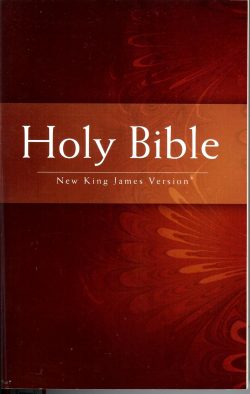

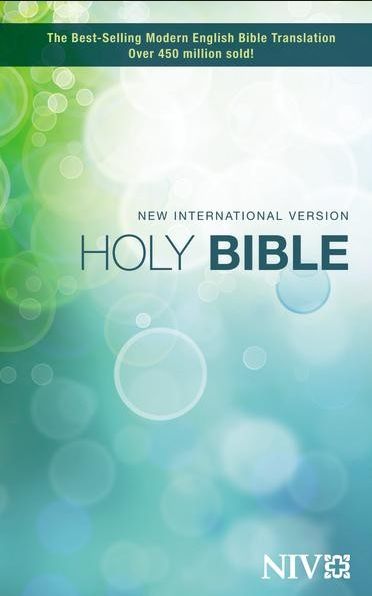
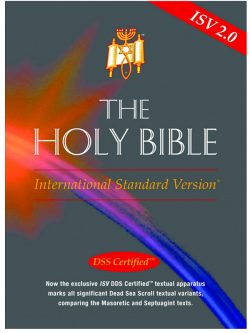




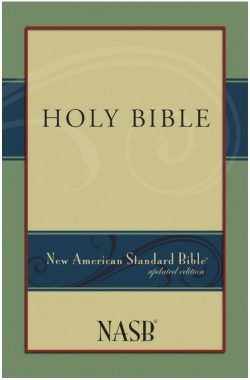


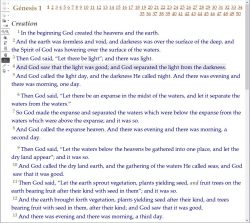



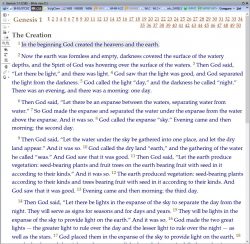
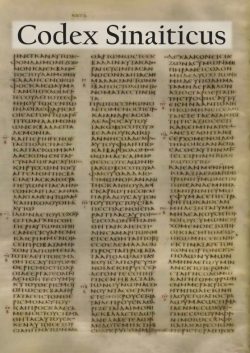


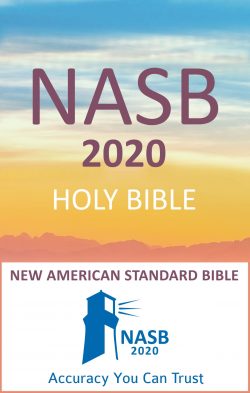

THGNT Reverse-Interlinear Bundle